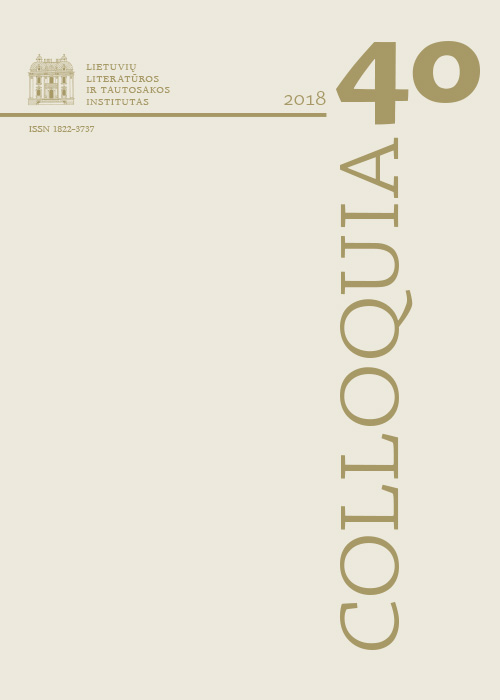Juozo Apučio novelių triptiko „Žalias laiko“ vingis diskursinė struktūra
Santrauka
Straipsnyje aptariami Juozo Apučio novelių triptiko „Žalias laiko vingis“ atlikėjų santykiai, laikas ir erdvė. Tris triptiko noveles jungianti keleivio-pasakotojo figūra gretinama su kitais individualiais atlikėjais ir kolektyviniu atlikėju – kaimo bendruomene. Novelėje „Arklio akyse“ greta antropomorfinių pasirodo du zoomorfiniai atlikėjai – kumelė Jūra ir namų sargybinis šuniukas. Keleivio takui, vedančiam iš dabarties į praeitį, priešpriešinamas iš praeities į ateitį nukreiptas kitų kelias. Išsiskiria uždaros ir atviros erdvės konfigūracijos. Ryškinami įžanginio, baigtinio ir tęstinio laiko aspektai.
Novelėje „Troboj prie upės“ lygiagrečiai plėtojami dviejų atlikėjų – keleivio ir moters – figūratyviniai takai. Keleivio ieškojimą modalizuoja noras „atsikratyti naštos“. Nuošalioje sodyboje jis, užuot apsisprendęs, kaip gyventi toliau, tampa sukrečiančios gyvenimo išpažinties klausytoju, bandančiu įminti moters ir vyro neįmanomo sugyvenimo mįslę.
Pirmojoje novelėje keleivio ieškomas vertės objektas yra prarastas laikas, antrojoje – noras atsikratyti savo naštos. Paskutinėje novelėje „Žalias laiko vingis“ keleivio vertės objektu tampa prisiimta kito gyvenimo našta. Vaikystės prisiminimų erdvę ir laiką antrojoje novelėje keičia nuošali troba ir geležinkelis, pasakotojo patirtus įspūdžius – moters, kuri pasirodo kaip išimtis sveiko proto pasaulyje, pasakojimas. Trečiojoje novelėje laiko vingis susieja karo trauminį įvykį su kasdienio gyvenimo monotonija, regimas dabarties figūras su jų atitikmenimis utopinėje vaikystės erdvėje.
Atsisiuntimai
Skaitomiausi šio autoriaus(ų) straipsniai
- Kęstutis Nastopka, Literatūriniai Tomo Venclovos poezijos intertekstai , Colloquia: T 42 (2019)
